Every pixel, frame, and detail matter with the rise of the digital and online world. One may be a gamer seeking perfect gaming pixels or a social media content creator striving for crystal-clear visual details. Choosing the proper connection for display can make or break the game. Have you ever wondered how many display choices you have to connect your PC to a monitor or a TV? Numerous alternatives are available for display interfaces, such as HDMI, DisplayPort, DVI, VGA, and USB-C. Hence, it is more complicated to decide on one clear winner.
So, how do you select which display option you go for? Well, you can only decide once you are clear on your specific requirements and know the pros and cons of these interfaces in detail. This blog post will take you on a journey to analyze in detail the potential benefits and drawbacks of these connections, the differences between them, and to decide which one will suit you the most. In this way, you can make an informed decision and enjoy a seamless and immersive display for your needs.
Table of content
- 1. Types of Display Interfaces Available in the Market
- 2. How do you choose the connection method that suits you?
- 3. Summary
-
4. Frequently Asked Questions
- 4.1 1. How does DisplayPort determine the version?
- 4.2 2. Does HDMI support multiple screens?
- 4.3 3. Does the VGA interface need to use digital signals or analog signals?
- 4.4 4. Is there a limit to the transmission distance of the DVI interface?
- 4.5 5. What kind of signals can the USB-C interface transmit?
Types of Display Interfaces Available in the Market
In this section, we will discuss five widely used display interfaces. The table below illustrates a quick comparison between these interfaces.
|
Port/Interface Type |
Latest Version |
Type of Signal |
Max Resolution |
Locking Connector |
|
VGA |
- |
Analog |
1920 x 1080 @ 60Hz |
Yes |
|
DVI |
DVI-D Dual Link |
Analog / Digital |
2560 x 1600 @ 60Hz |
Yes |
|
HDMI |
2.1b |
Digital |
7680x4320 (8K) @ 60Hz |
No |
|
DisplayPort |
2.1 |
Digital |
7680x4320 (8K) @ 60Hz |
No |
|
USB-C |
Thunderbolt 4 |
Digital |
7680x4320 (8K) @ 60Hz |
No |
VGA
The VGA connector, commonly known as ‘Video Graphics Array,’ is an old-school display interface introduced in the market in 1987 by the IBM company. It was viral back then, known as PC-RGB or D-sub 15. Computer specialists aimed its design for CRT monitors prevalent in the 1990s. With the advent of technology, it has become quite an outdated interface. Since it only works via analog signals, it cannot produce high-quality pixels and frame rates on today's LCD or LED monitors.
Another drawback of working with analog signals is that as you increase the resolution, the severe degradation of the final image occurs during the conversion from analog to digital. Moreover, the signal is prone to degradation with increased cable length. The maximum resolution technically possible from a VGA adapter is 1920 x 1080. So, you can run 1080p videos at 60 Hz using VGA, but with compromises in image quality.
The VGA adapter works using a VGA cable. If you have been using a PC for a long time, you must have connected a VGA cable from your CPU to the monitor using two small screws.VGA adapters are still widely used on projectors. However, with so many advanced solutions available for display interfaces, it is recommended only to use VGA when none of the other alternatives are available.
DVI
The DVI interface is commonly known as the Digital Video Interface. It was released in the late 1990s and became popular in the early 2000s. Like VGA, it can only transmit video signals and not audio signals. However, unlike VGA, DVI is available in three variants: DVI-A, DVI-D, and DVI-I. As the name suggests, DVI-A is analog-based, DVI-D is digital-based, and DVI-I can work with analog/digital signals.
DVI-A produced neat and better-quality images than VGA. However, like its counterpart, VGA, DVI-A has also become outdated and is rarely used due to the reliance on analog signals. DVI-D and DVI-I come with single and dual-link connections. A dual-link can transmit higher bit rates as it has more pins in the connector. It means that you can enjoy higher resolutions with higher bandwidths. DVI-D dual-link can transmit bitrates as high as 7.92 Gbit/sec at 2560 x 1600 resolution. Moreover, you can also enjoy 1080p videos at a 144Hz frame rate.
With many video adapter available, you can use a DVI to Display Port cable to connect your DisplayPort PC to a DVI monitor. However, if you require higher resolutions, you may have to use advanced interfaces such as DisplayPort and HDMI, which will come later in the blog.

HDMI
With so many options for display interfaces coming into the market, there came a need for a universal display interface that could cater to numerous requirements and work with multiple devices. Hence, HDMI came forth in 2003 as a joint venture of various companies. It is commonly known as High-Definition Multimedia Interface and has become an industry standard. Therefore, you may have seen an HDMI port in your TV, monitor, projectors, tablets, and gaming consoles. It can transmit both video and audio signals. Therefore, it is often the first choice connection when interfacing with a TV. It offers various variants, such as 1.0 being the first, 1.4 being the most widely used, and 2.0/2.1 version being the latest.
The connection requires using cables such as HDMI cables 10 ft in length, making it suitable for most common applications. Moreover, USB-C to HDMI cables are available for gadgets that do not house an HDMI port but have a Type-C Thunderbolt or USB 4 interface. There are two downsized versions available: Mini HDMI and Micro HDMI. HDMI 1.4 has a maximum bandwidth of 10.2 Gbit/sec, whereas HDMI 2.0 boasts an incredible 18 Gbit/sec. It is a significant factor if you plan to enjoy 4K content. On HDMI 1.4, you can stream 4K content at a reduced 24 fps; on HDMI 2.0, you can enjoy an incredible 60 fps at 4K. Using an 8K HDMI fiber cable like the CABLETIME HDMI 2.1, one can enjoy 8K content. All you need is an HDMI 2.1 support from your hardware.

USB C
USB-C is another type of display interface that manufacturers produce to be the jack of all trades. It can not only transmit video and audio but can also transfer power and data. Apple first introduced its interface, but due to its all-around features, it soon expanded to more and more devices. Most tablets, laptops, iPads, smartphones, and computers house a USB-C port. Moreover, with the advent of HDMI to USB-C cables, cross-interface connectivity has also become possible. Hence, this interface is becoming highly popular.
USB-C supports video, audio, power, and data transmission capability. It can transfer up to 100W of energy using a robust cable like the CABLETIME USB4 cable while delivering 40Gbps data transfer speeds. Another advantage of a USB-C connector is its straightforward connectivity. You do not have to worry about the orientation of its connector and can connect it regardless of its position. Regarding bandwidth rates, a standard USB-C connector can provide speeds up to 40 Gbit/sec. Thunderbolt interface combined with USB-C port allows users to enjoy 4K resolution @ 120Hz refresh rate and 8K @ 60Hz.

The potential drawback associated with USB-C technology is that it is not compatible with AdaptiveSync Technology. Hence, there may be a better video interface for gamers. Despite offering high refresh rates, screen tearing will occur if adaptive sync remains inaccessible for USB-C users.
|
USB-C Interface |
Date of Release |
Max Data Transfer Rate |
Number of Port PINs |
Supported Resolutions and Refresh Rates |
|
USB 4 |
March 2019 |
40 Gbps |
24 |
8K at 60 Hz, 4K at 120 Hz, 1440p at 144 Hz, 1080p at 240 Hz |
|
Thunderbolt 2 |
February 2011 |
20 Gbps |
20 |
4K at 60 Hz, 2K at 120 Hz, 1080p at 240 Hz |
|
Thunderbolt 3 |
June 2015 |
40 Gbps |
20 |
8K at 60 Hz, 5K at 120 Hz, 4K at 144 Hz, 1080p at 240 Hz |
|
Thunderbolt 4 |
March 2020 |
40 Gbps |
20 |
8K at 60 Hz, 5K at 120 Hz, 4K at 144 Hz, 1080p at 360 Hz |
DisplayPort
Display Port is another standard interface solution known for its superior video and audio quality. Currently, it is the only display interface supporting the highest video resolution, 8K with color depth. Owing to its high-definition video quality, it is the first-choice interface for gaming monitors and high-end graphics cards. Display Port comes in various variants, such as 1.2,1.3, 1.4, and 2.0 being the latest version. Unlike VGA and DVI, they can also transmit audio signals.
For gadgets such as MacBooks that can not accommodate the standard Display Port connection, there is an alternative downsized variant known as Mini Display Port. You just need a mini display port cable to establish a seamless interface and enjoy immersive visuals. A Mini DisplayPort cable might not be compatible with a Thunderbolt port, although both look similar.
DisplayPort 1.2 has a bandwidth of 17.2 Gbits/sec and can produce video quality of 3840x2160 resolution at 60 Hz. DisplayPort 1.3 and 1.4 boast a bandwidth of 25.92 Gbits/sec and can create magic with screen resolutions as high as 7680 x 4320, commonly known as 8K. The 1.4 version can even transmit 4K video at 144 Hz, which is insane. Professional gamers prefer using a DisplayPort using a high-end cable like the CABLETIME DisplayPort to enable adaptive sync technologies and highly high refresh rates. Another advantage of using DisplayPort is that you can display the output to multiple monitors using the Multi-Stream Transport feature.

|
DisplayPort Version |
Supported Speed |
Supported Resolution |
|
DisplayPort 1.0 |
2.7 Gbps |
2560 x 1600 at 60 Hz |
|
DisplayPort 1.2 |
5.4 Gbps |
3840 x 2160 at 60 Hz |
|
DisplayPort 1.4 |
8.1 Gbps |
7680 x 4320 at 60 Hz |
|
DisplayPort 2.0 |
20 Gbps |
7680 x 4320 at 144 Hz or 10240 x 4320 at 60 Hz |
|
DisplayPort 2.1 |
80 Gbps |
7680 x 4320 at 165 Hz or 15360 x 8640 at 60 Hz |
How do you choose the connection method that suits you?
There is no clear-cut winner when choosing one of the five alternative display connection methods. The selection of the best connection interface depends upon your specific needs. We will focus on the remaining three technologies since VGA and DVI have become outdated.
HDMI is your best shot if you use home theater devices such as TVs or Blu-Ray Players. It transmits audio and video signals and is a universal display interface found on most devices. You may use USB-C to HDMI cable or HDMI to USB-C cable for better compatibility between devices. With the advent of mini and micro HDMI ports, HDMI is one of the best interfaces for smaller gadgets. Moreover, by using an 8K HDMI fiber cable, you may enjoy resolution and frame rates as high as 4K and 60 fps, which is more than enough for home TV needs.
If you are a passionate gamer who yearns for perfect gaming visuals, high resolutions, and maximum frame rates, you should go for DisplayPort. Most high-end CPUs and graphics card manufacturers provide DisplayPort for optimum results. For physically smaller gadgets, there is now the luxury of Mini DisplayPort cable to output their display. Moreover, DisplayPort is the easiest to work with if you want multiple output displays.
You may switch to a USB Type-C connection if your requirements require an all-around functionality. You can transmit video, audio, power, and data with a single cable. Moreover, it is effortless to plug in, unlike VGA and DVI cables which require screws to keep the connector in place. However, a USB-C interface connection can not cater to passionate gaming needs.
|
Port/Interface Type |
Best Use Scenarios |
|
VGA |
Office work, conference rooms, connecting older monitors |
|
HDMI |
Casual Gaming, TV, home theater, connecting other video devices |
|
DVI |
Casual Gaming, connecting older monitors |
|
USB-C Thunderbolt 4 |
High-end gaming, connecting multiple devices to a single port |
|
DisplayPort 2.1 |
Professional Gaming, TV, home theater, communicating with a wide range of video devices |
Summary

VGA, DVI, HDMI, DisplayPort, and USB-C are all valuable options for a display interface with their pros and cons. Having discussed this in detail now, you can easily decide to choose one of them. The good news is that with the advent of technology, displays are improving, and the future looks bright.
Consider buying a CABLETIME HDMI cable 10ft long if your display needs are limited to home theaters such as TVs or Blu-Ray players. If you want a converter to switch from USB-C to HDMI interface, then CABLETIME USB-C to HDMI cable can provide you stunning visuals at a maximum specification of 8K/60Hz, which is insane. Similarly, if your PC might feature an old DVI port, but you want to output the display on your latest monitor equipped with DisplayPort, then CABLETIME DVI to DisplayPort cable is your best choice to enjoy 4k/30 Hz visuals. Whatever you buy after reading this blog post, the goal is to make an informed decision so your investment does not go to waste.
Frequently Asked Questions
1. How does DisplayPort determine the version?
To determine the version of the DisplayPort, the buyer needs to examine a device specification thoroughly. The latest DisplayPort 2.1 can deliver up to 80 Gbps and support 15360 x 8640 (8K) at 60 Hz. However, physical examination makes it impossible to determine the port version as they all have a similar physical shape. You need a specific type of DisplayPort to support the latest versions. Ensure that you find the right one. If you have a DisplayPort monitor and a DVI port computer, a DVI to DisplayPort cable can help.
2. Does HDMI support multiple screens?
Yes, HDMI can support multiple screens with the help of a HDMI splitter. It has one male end, which you may connect with your laptop or PC using the best 8K HDMI fiber cable. The splitter has two or more ports on the other end to mirror the display on multiple screens.
3. Does the VGA interface need to use digital signals or analog signals?
VGA interface only uses analog signals to process the display. It is also why it has become an outdated technology with the rise of the digital world. VGA was also known as PC-RGB as its cables carry separate signals for Red, Green, and Blue color channels. VGA was viral in the past. However, some projectors still feature the port. Many adapters in the market can convert analog signals to digital signals, but the image quality could be better. Digital solutions such as HDMI provide an HDMI cable 10 ft long for seamless connection. However, VGA analog signals have a history of signal degradation with increased cable length. Hence, it is not popular anymore.
4. Is there a limit to the transmission distance of the DVI interface?
Yes, of course. There is a limit to the transmission distance of the DVI interface. For the best quality, the maximum length of the cable is 5 meters. However, in some cases, signal boosters and repeaters may be used to lengthen the transmission distance to as long as 15 meters.
5. What kind of signals can the USB-C interface transmit?
USB Type-C interface can transmit video, audio, data, and power. It is why it is the most comprehensive and versatile connector for any device. It can transmit data signals at speeds as high as 40 Gbps using a USB4 or Thunderbolt 4 interface. It is also capable of delivering 100W of power. The latest Thunderbolt 4 interface for Type-C port supports 8K at 60 Hz, 5K at 120 Hz, 4K at 144 Hz, and 1080p at 360 Hz. The only drawback of USB-C is that it does not work with the adaptive sync technology of graphics cards.

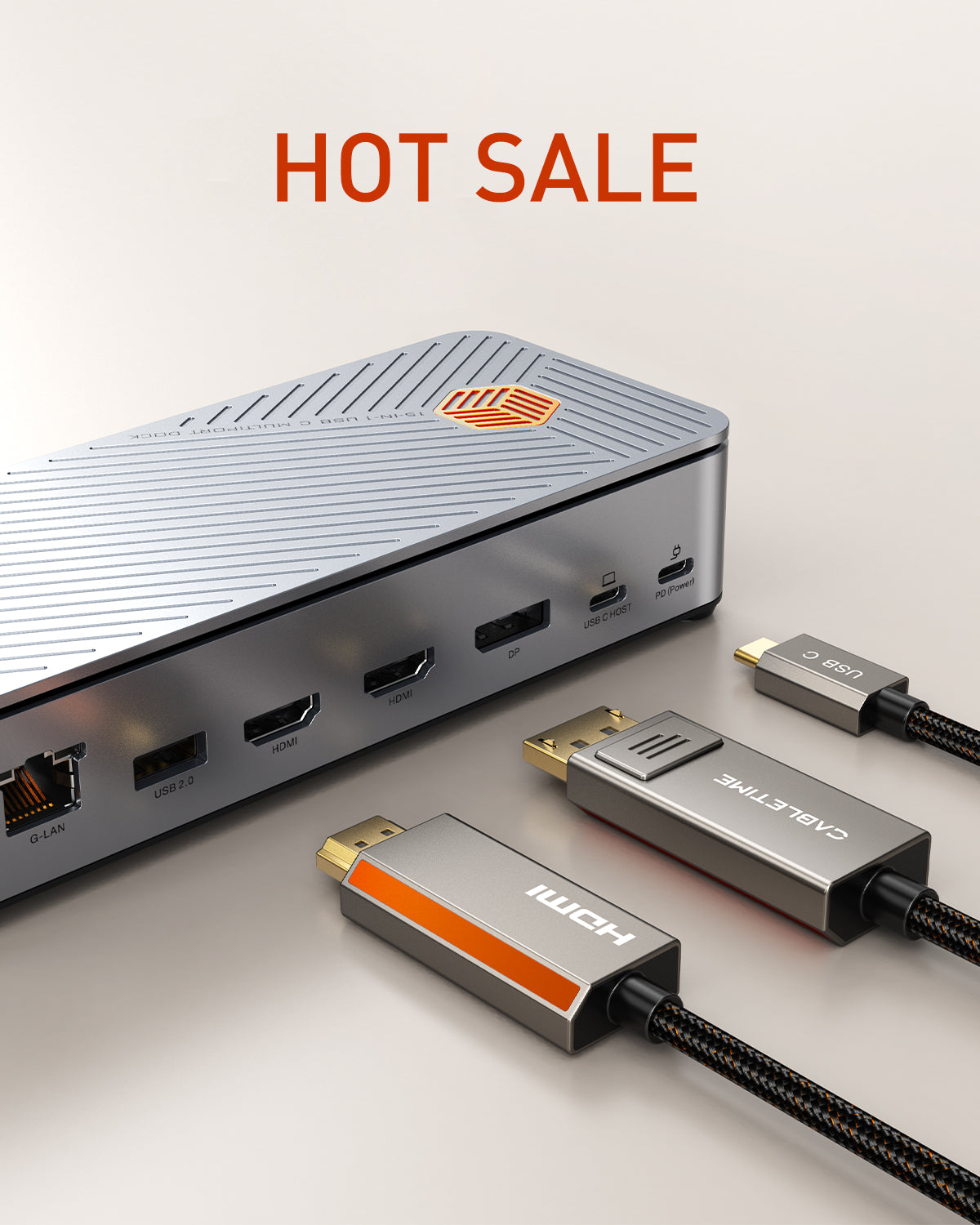
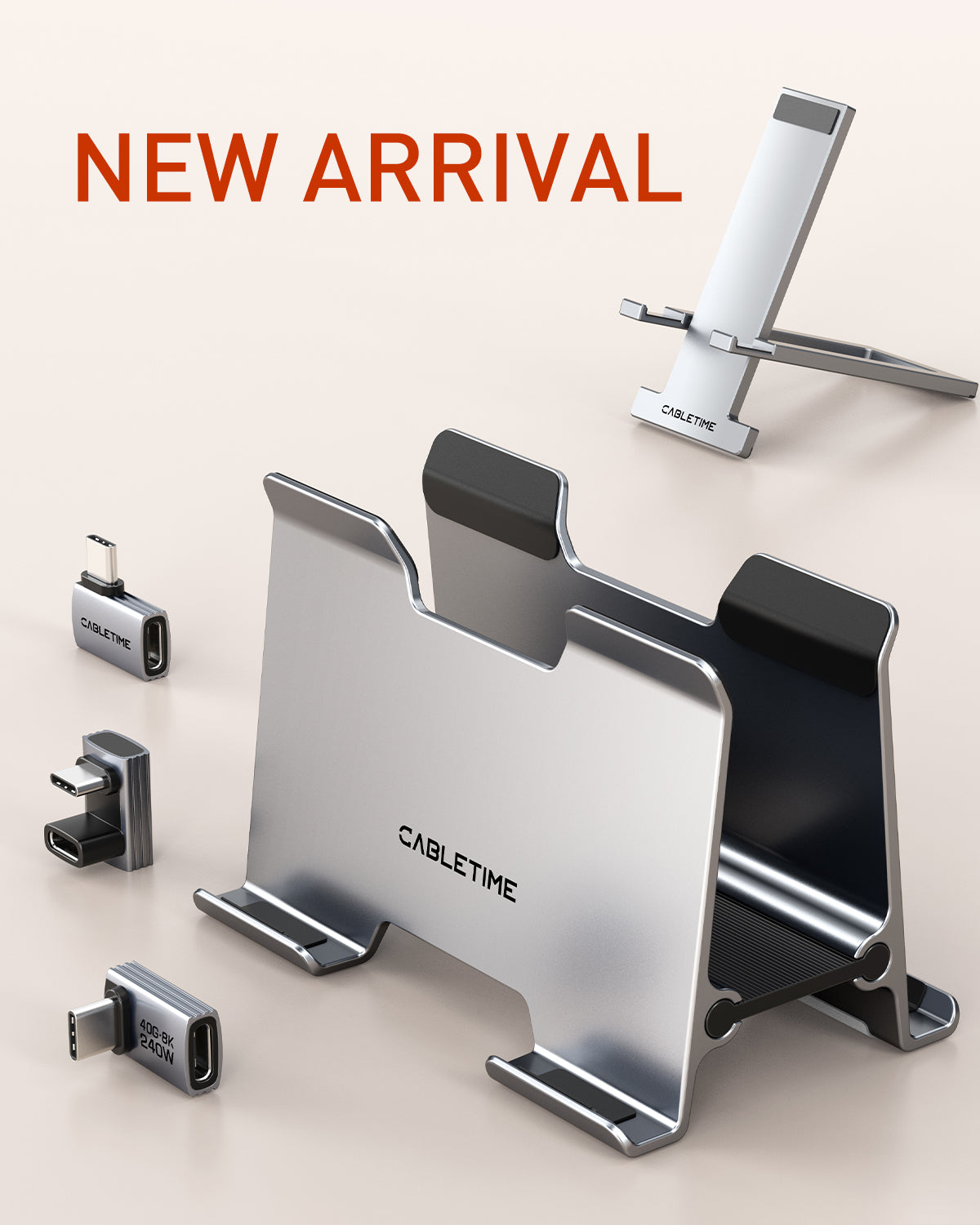
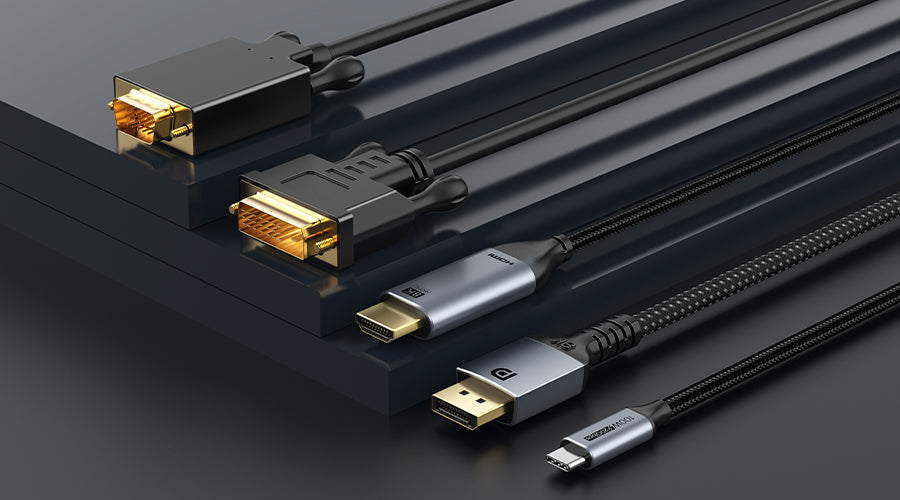
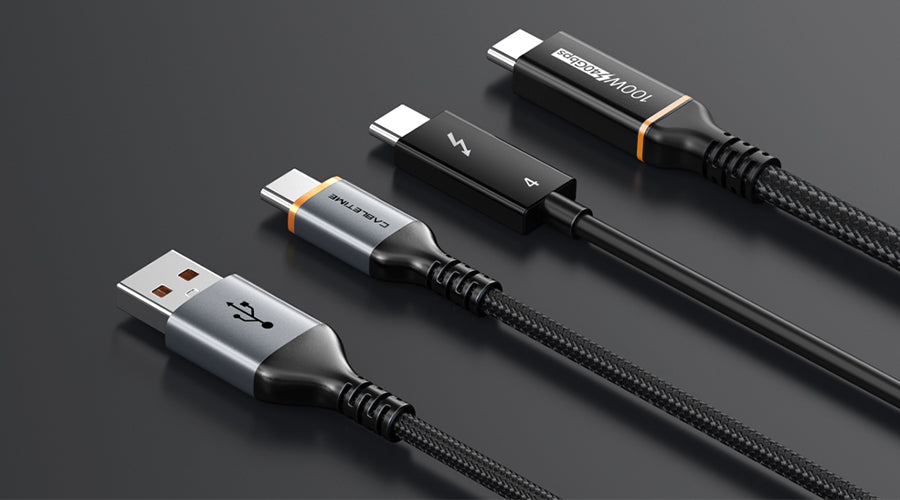
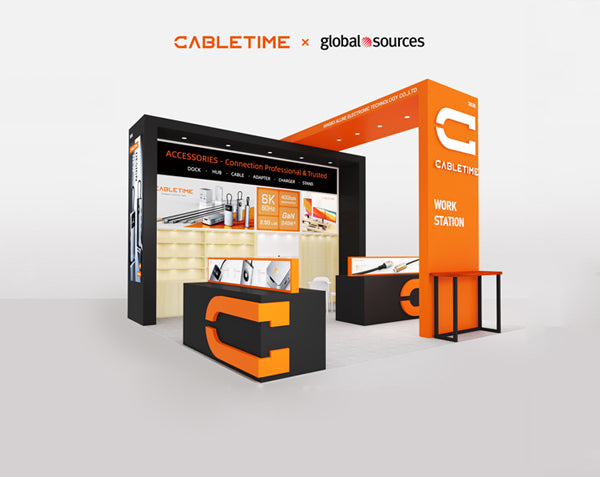
Leave a comment
This site is protected by hCaptcha and the hCaptcha Privacy Policy and Terms of Service apply.